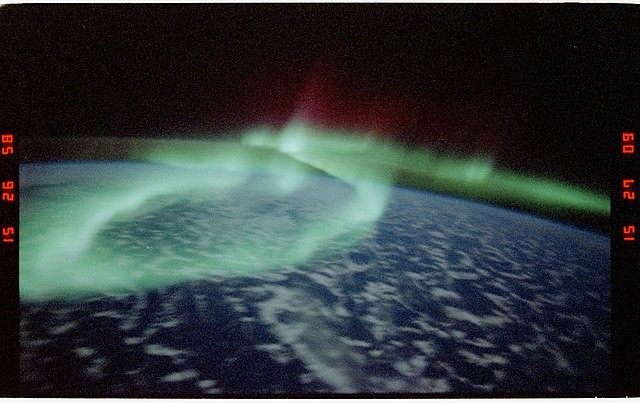
(Photo: Wikimedia Commons/National Archives at College Park - Still Pictures )
Aurora Borealis is not exclusive on Earth. Spectacular light shows were also observed on Saturn and Uranus, and the James Webb Space Telescope (JWST) will be looking at it.
James Webb Space Telescope To Examine Light Shows in Uranus and Saturn
Two different groups of University of Leicester astronomers will use the $10 billion space telescope to examine auroras above the icy giants Uranus and Saturn. The goal is to thoroughly explain the mechanisms underlying the polar light displays across several planets.
"The JWST is already changing how we perceive the universe, from the solar system, our very own cosmic backyard, to the first galaxies formed at the beginning of time," said Henrik Melin from the University of Leicester School of Physics and Astronomy who will lead the Uranus investigation, in a statement. "I am thrilled to have been awarded time on this remarkable observatory, and this data will fundamentally shape our understanding of both Saturn and Uranus."
Less is known about these extraterrestrial light displays, even though auroras have been observed over other planets in the solar system and should be feasible around any planet with an atmosphere and magnetic field.
The auroras of Uranus, an ice giant with an atmosphere composed of water, ammonia, and methane, are now largely unknown.
Actually, it wasn't until this year—after 30 years of research—that a group of scientists from the University of Leicester School of Physics and Astronomy, under the direction of Emma Thomas, a doctoral student, were able to confirm the existence of an infrared aurora surrounding Uranus.
Uranus has a 97.77-degree tilt due to a previous impact with a planet around the size of Earth. This indicates that its auroras are located around what would typically be a solar system planet's equator and that its poles are oriented nearly exactly toward and away from the sun.
Melin and his associates utilize the James Webb Space Telescope to witness the auroras on Uranus, the seventh planet from the sun. Based on the earlier discovery of Uranian auroras, they plan to explore a potential new finding.
As previously stated by Thomas, the temperature of all the gas giant planets, including Uranus, is hundreds of degrees Kelvin/Celsius higher than what the models predicted. Thus, researchers are left scratching their heads as to why those planets are so much hotter than expected. One theory suggests that this is because of the energetic aurora, which produces and drives heat from the aurora towards the magnetic equator.
ALSO READ: NASA's Dragonfly Mission to Saturn's Titan Delayed Due to Budget Uncertainties
Auroras in Other Planets
An aurora is the striking conclusion of a sequence of events that begins with the sun. Known as the solar wind, the sun continuously releases a torrent of charged particles into the solar system's depths. When these particles come into contact with a planet like Earth, they interact with the magnetosphere, the magnetic field surrounding it. This causes the field to compress and give out energy as a teardrop.
Jupiter, Saturn, Uranus, and Neptune are the four gas giants. They are distinguished by their strong magnetic fields, dense atmospheres, and individual auroras. Because these auroras have different atmospheres and magnetospheres than ours, their exact nature differs slightly from Earth's. For instance, the gases in the planet's atmosphere affect the colors. However, the basic principle underlying the auroras remains the same.
The strongest auroras on Saturn are not visible to the human eye because they are located in the UV and infrared regions of the color spectrum. However, lesser auroras, which are rarer, have also been seen in pink and purple.
RELATED ARTICLE: Is the ISS Retiring? NASA Details Plans for Using Privately Developed Space Stations in the Future
Check out more news and information on Space in Science Times.














